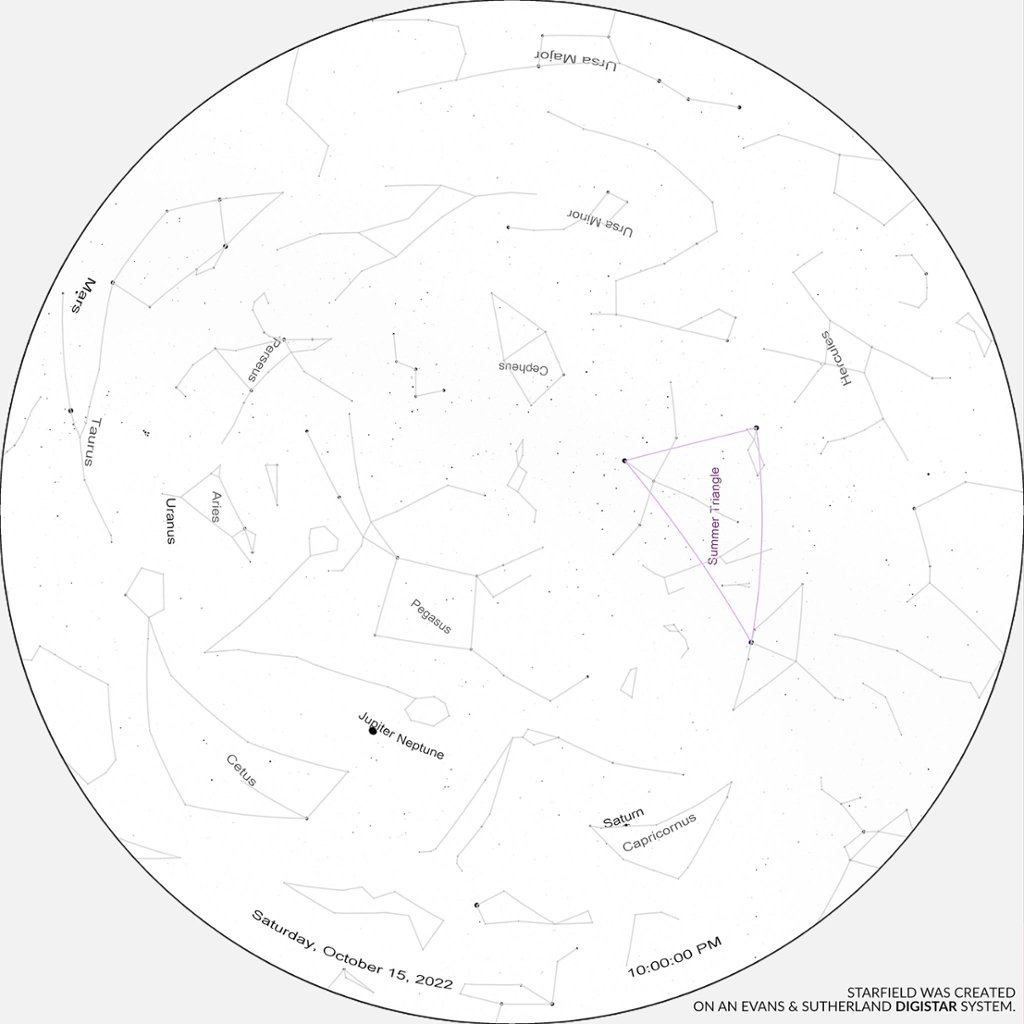The planets continue to dominate our night skies this month. We've got all the details for when and where to see the planets this month.
We start with Saturn in the southwest after sunset. The ringed jewel is visible most of the evening this month, waiting to set until 3 am. Binoculars or a small telescope under low magnification will reveal Saturn's incredible rings and a few moons. Saturn has the most moons of any planet in the solar system, with a whopping 82, not including the tiny rock and ice particles that form its magnificent rings.
Saturn may have the most moons, but Jupiter is not far behind. Spot Jupiter is high in the southern sky a few hours after sunset. It will be visible all night long. You can grab a telescope or binoculars to expand your view of the king planet. You'll spot the four Galilean moons through a modest telescope as they orbit around the planet. Look for the cloud bands and Great Red Spot too! Then, use Jupiter as a guide to locate Neptune, a little more than 10 degrees away. Use our handy sky map below to help! Be aware that Neptune will only appear as a tiny disc in the eyepiece, even with a mid-size amateur telescope with high magnification.
Over the coming season, Mars will get brighter as it approaches opposition in early December. Look for Mars to rise in the East around 10 pm in the constellation Taurus, the bull. The bright red star Aldebaran is nearby and has a similar brightness to the red planet. Not only is Mars getting brighter each night, but it will also rise progressively earlier in the evening.
Observers in the western half of the US had a rare opportunity around midnight on October 11/12 to watch Uranus slip behind the Moon for a brief period as the Moon occulted the ice giant. Occultations occur when an object, such as the Moon, appears to move in front of another celestial body, such as a planet or star. Those of us in the eastern US will have a similar opportunity to see Uranus occulted by the Moon on January 1, 2023.
Another occultation will occur mid-morning on October 24. The almost New Moon will slip in front of fast-moving Mercury around 10 am. CAUTION: Proper protection is needed to view this event. The Moon will be only a few degrees away from the Sun. Do not go scanning the skies with your telescope, hoping to spot the Moon! Only observe this occultation with proper safety precautions in place to protect your eyes and equipment.
Speaking of proper solar filters and eye protection - observers in Europe and parts of Asia and Africa will be treated to a partial solar eclipse on October 25. Two weeks later, we'll see a total lunar eclipse in the very early morning hours of November 8. Although we won't be able to experience the solar eclipse in person, live streams will be broadcast online across the globe. Be sure to tune in - the eclipse starts at 5 am EST.
No matter when you head outside to gaze at the stars, we wish you clear skies!
